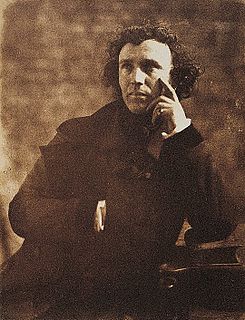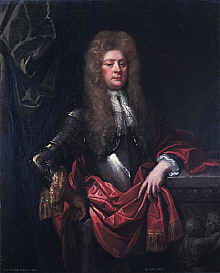
Lady Stair's Close (477 Lawnmarket) is a close in Edinburgh, Scotland, just off the Royal Mile, close to the entrance to Gladstone's Land. Most notably it contains the Scottish Writers' Museum.

Lady Stair's Close (477 Lawnmarket) is a close in Edinburgh, Scotland, just off the Royal Mile, close to the entrance to Gladstone's Land. Most notably it contains the Scottish Writers' Museum.
Located in Edinburgh's Lawnmarket, Lady Stair's Close is the location of a 17th-century townhouse called Lady Stair's House built in 1622 for Sir William Gray of Pittendrum, an Edinburgh Baronet. It was originally called Lady Gray's House after the widow of the first proprietor. [1] She was the mother of the Scots Worthy Andrew Gray whose books became well-known despite dying at an early age. It was then bought in 1719 by Elizabeth Dundas, Lady Stair, [2] the widow of John Dalrymple (1648 - 1707) the 1st Earl of Stair, hence its present name. [3]
The close contains the Makars' Court - inscribed stones to the great names of Scottish literature. [4]
The Writers' Museum, belonging to the city of Edinburgh, contains memorabilia which celebrate the lives of three writers who all at one time lived in Edinburgh: Sir Walter Scott, Robert Louis Stevenson, and Robert Burns. Burns stayed in a house in Baxter's Close (since demolished) to the east of Lady Stair's Close during his first trip to Edinburgh in 1786. [5]

The Royal Mile is a succession of streets forming the main thoroughfare of the Old Town of the city of Edinburgh in Scotland. The term was first used descriptively in W M Gilbert's Edinburgh in the Nineteenth Century (1901), "...with its Castle and Palace and the royal mile between", and was further popularised as the title of a guidebook by R T Skinner published in 1920, "The Royal Mile (Edinburgh) Castle to Holyrood(house)".

Robert Fergusson was a Scottish poet. After formal education at the University of St Andrews, Fergusson led a bohemian life in Edinburgh, the city of his birth, then at the height of intellectual and cultural ferment as part of the Scottish enlightenment. Many of his extant poems were printed from 1771 onwards in Walter Ruddiman's Weekly Magazine, and a collected works was first published early in 1773. Despite a short life, his career was highly influential, especially through its impact on Robert Burns. He wrote both Scottish English and the Scots language, and it is his vivid and masterly writing in the latter leid for which he is principally acclaimed.

Dorothy, Lady Dunnett was a Scottish novelist best known for her historical fiction. Dunnett is most famous for her six novel series set during the 16th century, which concern the fictitious adventurer Francis Crawford of Lymond. This was followed by the eight novel prequel series The House of Niccolò. Her other works include a novel concerning the historical Macbeth called King Hereafter (1982), and a series of mystery novels centered upon Johnson Johnson, a portrait painter and spy.

Sir John Robert Steell was a Scottish sculptor. He modelled many of the leading figures of Scottish history and culture, and is best known for a number of sculptures displayed in Edinburgh, including the statue of Sir Walter Scott at the base of the Scott Monument.
The Dorothy Dunnett Society is a charity set up by Dorothy Dunnett in 2001. It was originally called the Dorothy Dunnett Readers' Association. It is a Charity regulated under Scottish law and has the following aims:

Thomas Hamilton was a Scottish architect, based in Edinburgh where he designed many of that city's prominent buildings. Born in Glasgow, his works include: the Burns Monument in Alloway; the Royal High School on the south side of Calton Hill ; the Royal College of Physicians of Edinburgh; the George IV Bridge, which spans the Cowgate; the Dean Orphan Hospital, now the Dean Gallery; the New North Road Free Church, now the Bedlam Theatre; Cumstoun, a private house in Dumfries and Galloway; and the Scottish Political Martyrs' Monument in Old Calton Cemetery, Edinburgh.

John Dalrymple, 1st Earl of Stair PC was a Scottish politician and lawyer. As Joint Secretary of State in Scotland 1691–1695, he played a key role in suppressing the 1689-1692 Jacobite Rising and was forced to resign in 1695 for his part in the Massacre of Glencoe. Restored to favour under Queen Anne in 1702 and made Earl of Stair in 1703, he was closely involved in negotiations over the 1707 Acts of Union that created the Kingdom of Great Britain but died on 8 January 1707, several months before the Act became law.

This article is a timeline of the history of Edinburgh, Scotland, up to the present day. It traces its rise from an early hill fort and later royal residence to the bustling city and capital of Scotland that it is today.

Fionn Mac Colla was a Scottish novelist closely connected to the Scottish Renaissance. Although he wrote in English, he was very interested in Scottish Gaelic language and culture and campaigned for it to return to, what he perceived to be, its rightful place in the Scottish mainstream. He was a good personal friend of Hugh MacDiarmid and Helen Cruickshank.

The Mound is an artificial slope in central Edinburgh, Scotland, which connects Edinburgh's New and Old Towns. It was formed by dumping around 1,501,000 cartloads of earth excavated from the foundations of the New Town into Nor Loch which was drained in 1765 and forms today's Princes Street Gardens.

Makars' Court is a courtyard in central Edinburgh, Scotland. It forms part of Lady Stair's Close, which connects the Lawnmarket with The Mound to the north, and is next to the Writers' Museum. Described as an "evolving national literary monument", the courtyard incorporates quotations from Scottish literature inscribed onto paving slabs. The quotations represent works in the languages used by Scots past and present: Gaelic, Scots, English, and Latin.

The Old Town is the name popularly given to the oldest part of Scotland's capital city of Edinburgh. The area has preserved much of its medieval street plan and many Reformation-era buildings. Together with the 18th/19th-century New Town, and West End, it forms part of a protected UNESCO World Heritage Site.

Saltoun Hall is an historic house standing in extensive lands off the B6355, Pencaitland to East Saltoun road, about 1.5 miles from each village, in East Lothian, Scotland. The house is reached by way of an impressive gateway and is situated at grid reference NT461685.

The Writers’ Museum, housed in Lady Stair's House at the Lawnmarket on the Royal Mile in Edinburgh, presents the lives of three of the foremost Scottish writers: Robert Burns, Walter Scott and Robert Louis Stevenson. Run by the City of Edinburgh Council, the collection includes portraits, works and personal objects. Beside the museum lies the Makars' Court, the country's emerging national literary monument.

Lady Stair's House is a building, completed in 1892, which stands in Lady Stair's Close in Lawnmarket, Edinburgh, Scotland. The structure is a Category A listed building, having received its designation in 1970. Today it is home to the Writers' Museum.

Elizabeth Dundas, Lady Stair, was a Scottish noblewoman and owner of Lady Stair’s House in the Lawnmarket, in Edinburgh’s Old Town.

John Dowie's Tavern was an 18th/19th century tavern in Edinburgh, Scotland, frequented by a number of well-known persons. Its proximity to the Edinburgh law courts also meant it was a haunt of Edinburgh lawyers and judges.

Eleanor Dalrymple, Countess of Stair born Lady, Eleanor Campbell aka Eleanor, Lady Primrose was a British victim of marital abuse. She is said to be the basis for a story by Sir Walter Scott. Lady Stair's Close in Edinburgh is said to be named for her, but another source says it was named for her mother-in-law.
Cannonball House is a 17th-century town house on the Royal Mile in Edinburgh, Scotland. It was built in 1630 and substantially renovated in the early 20th century. It takes its name from a cannonball embedded in its western wall. The building is protected as a Category A listed building.